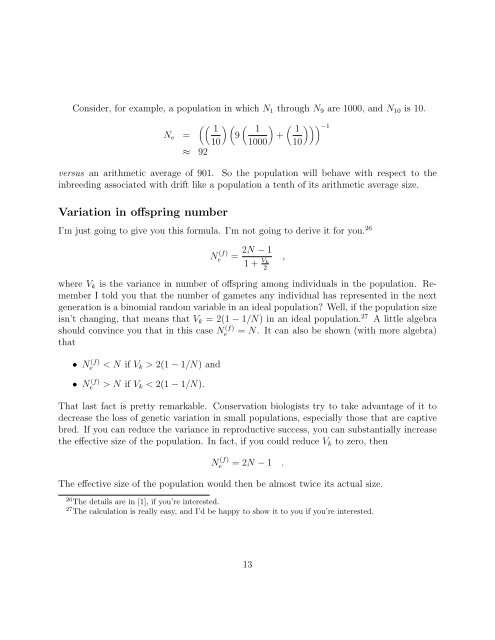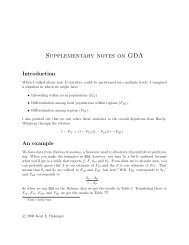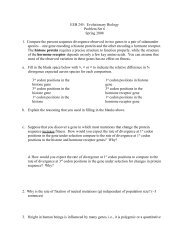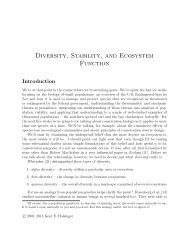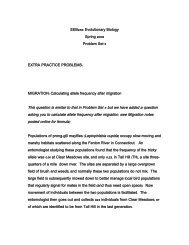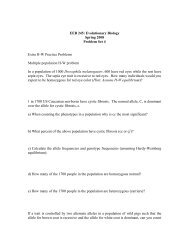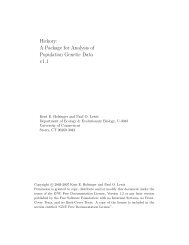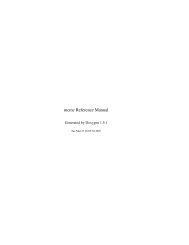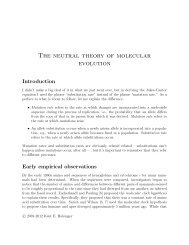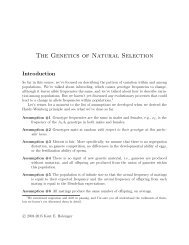Genetic Drift - Kent Holsinger
Genetic Drift - Kent Holsinger
Genetic Drift - Kent Holsinger
Create successful ePaper yourself
Turn your PDF publications into a flip-book with our unique Google optimized e-Paper software.
Consider, for example, a population in which N 1 through N 9 are 1000, and N 10 is 10.N e =(( ( ( ) ( 1 1 1 −19 +10)1000 10)))≈ 92versus an arithmetic average of 901. So the population will behave with respect to theinbreeding associated with drift like a population a tenth of its arithmetic average size.Variation in offspring numberI’m just going to give you this formula. I’m not going to derive it for you. 26N (f)e = 2N − 11 + V k2,where V k is the variance in number of offspring among individuals in the population. RememberI told you that the number of gametes any individual has represented in the nextgeneration is a binomial random variable in an ideal population? Well, if the population sizeisn’t changing, that means that V k = 2(1 − 1/N) in an ideal population. 27 A little algebrashould convince you that in this case N e(f) = N. It can also be shown (with more algebra)that• N (f)e• N (f)e< N if V k > 2(1 − 1/N) and> N if V k < 2(1 − 1/N).That last fact is pretty remarkable. Conservation biologists try to take advantage of it todecrease the loss of genetic variation in small populations, especially those that are captivebred. If you can reduce the variance in reproductive success, you can substantially increasethe effective size of the population. In fact, if you could reduce V k to zero, thenN (f)e = 2N − 1 .The effective size of the population would then be almost twice its actual size.26 The details are in [1], if you’re interested.27 The calculation is really easy, and I’d be happy to show it to you if you’re interested.13


